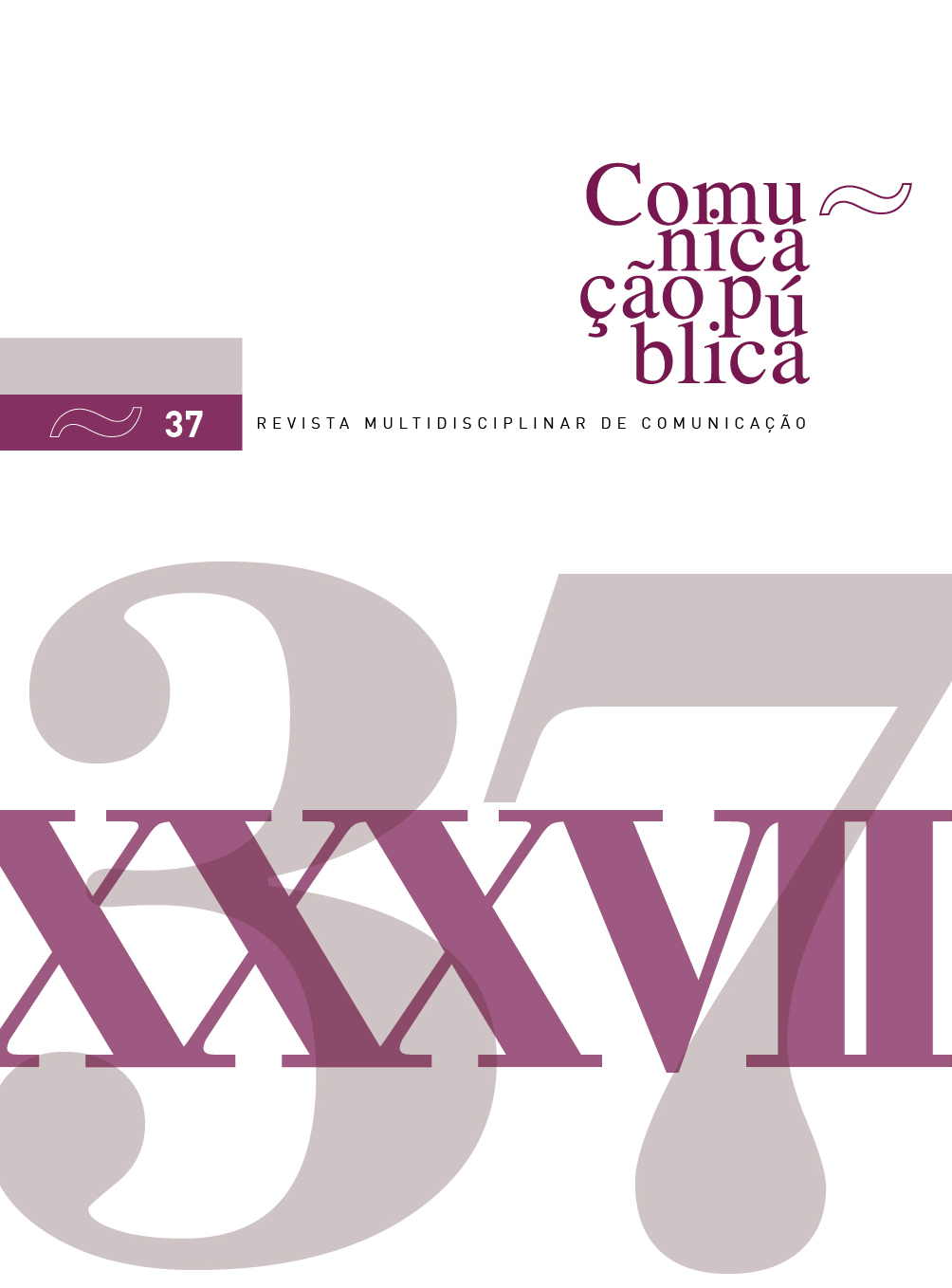The immortal image
deepfakes and the limits of post-mortem media identity in the VW Brasil 70 case
DOI:
https://doi.org/10.34629/cpublica.846Keywords:
deepfakes, media identity, subjectivity, artificial intelligence, indiciary paradigmAbstract
We investigated how artificial intelligence technologies, especially deepfakes, can extend an individual’s identity beyond their physical existence, dissociating it from their original subjectivity and temporal and spatial boundaries. We used the case of the Volkswagen commercial that digitally recreated the singer Elis Regina to analyze the ethical, social, and philosophical implications of this practice. Following the indiciary paradigm as detailed by Braga (2008), we conducted a qualitative analysis of the comments on the YouTube video, organized and categorized using Atlas.ti software. The results ranged from admiration for the technology to ethical critiques concerning memory and authenticity. We concluded that there is an urgent need for regulation and ongoing critical analysis of deepfake technologies to protect the dignity and memory of recreated individuals.
Downloads
References
Bakhtin, M. M. (2011). Estética da criação verbal. Martins Fontes.
Beiguelman, G. (2023). O deepfake de Elis Regina e as fantasmagorias das IAs. ZUM: Revista de fotografia. https://revistazum.com.br/colunistas/elis-regina-ias/.
Belchior. (1976). Como nossos pais. In Alucinação. PolyGram.
Berger, P. & Luckmann, T. (2014). A construção social da realidade (36.a Ed.). Editora Vozes.
Braga, J. L. (2008). Comunicação, disciplina indiciária. MATRIZes, 1(2), 73–88. https://doi.org/10.11606/issn.1982-8160.v1i2p73-88.
Butler, J. (2003). Problemas de gênero: feminismo e subversão da identidade (Trad. R. Aguiar; 22.ª Ed.). Civilização Brasileira.
Butler, J. (2015). Relatar a si mesmo: crítica da violência ética (Trad. R. Bettoni; 1.a Ed.). Autêntica.
Câmara dos Deputados. (2024). Projeto exige consentimento prévio para uso de deepfake de pessoa falecida. Câmara dos Deputados. https://www.camara.leg.br/noticias/983623-projeto-exige-consentimento-previo-para-uso-de-deepfake-de-pessoa-falecida.
Deleuze, G., & Guattarri, F. (2010). O que é a filosofia? (Trad. B. Prado Jr. & A. A. Muñoz; 3.a Ed.). Editora 34.
Foucault, M. (1995). O sujeito e o poder. In H. L. Dreyfus & P. Rabinow (Orgs.), Michel Foucault: uma trajetória filosófica (pp. 231–250). Forense Universitária.
Foucault, M. (2012). A arqueologia do saber (8.a Ed.). Forense Universitária.
Foucault, M. (2013). Vigiar e Punir. Edições 70.
Gabellini, L., Filho, M. J. V. & Procópio, M. R. (2024). Dilemas contemporâneos da inteligência artificial: narrativa, ética e emoção no comercial “Volkswagen 70 anos gerações”. Revista GEMInIS, 15(1), 165–187. https://doi.org/10.14244/2179-1465.RG.2024v15i1p165-187.
Hall, S. (2003). Da diáspora: identidades e mediações culturais. Editora UFMG.
Lana, L. C. de C., & França, R. O. (2008). Do cotidiano ao acontecimento, do acontecimento ao cotidiano. E-Compós, 11(3), 1–13. https://doi.org/10.30962/ec.303.
Mariz, L., Coelho, I. M. F. C., & Andrade, L. de S. N. (2024). Ressurreição digital: a disposição do direito de imagem após a morte na indústria audiovisual e suas repercussões jurídicas. Revista GEMInIS, 15(1), 4–20. https://doi.org/10.14244/2179-1465.RG.2024v15i1p04-20.
Martino, L. M. S. (2016). A potência da alteridade nas mídias digitais: uma perspectiva de identidade e diferença. Lumina, 10(2). https://doi.org/10.34019/1981-4070.2016.v10.21271.
Moura, L. de S. (2024). 70 anos de Volkswagen no Brasil: uma análise de branded content com deepfake. Comunicação Pública, 19(36), 1–19. https://doi.org/10.34629/cpublica798.
Raza, A., Munir, K., & Almutairi, M. (2022). A novel deep learning approach for deepfake image detection. Applied Sciences, 12(19), 9820. https://doi.org/10.3390/app12199820.
Ricoeur, P. (2010). Tempo e narrativa (Vol. 1). Editora Martins Fontes.
Rodríguez Reséndiz, H., & Rodríguez Reséndiz, J. (2024). Digital Resurrection: Challenging the Boundary between Life and Death with Artificial Intelligence. Philosophies, 9(3), 71. https://doi.org/10.3390/philosophies9030071.
Rohling, N. (2023). O diálogo entre os escritos do Círculo de Bakhtin e o realismo agencial na análise de materialidades discursivas contemporâneas. Documentos de Traballo en Ciencias da Linguaxe: DTCL, 4 (DTCL 2023), 121–145.
Rolnik, S. (com Preciado, P. B.). (2018). Esferas da insurreição: notas para uma vida não cafetinada (1.a Ed.). N-1 Edições.
Silva, J. dos S., & Alves, M. da P. C. (2021). A identidade na vida e a identidade na arte: um panorama identitário nas obras de Bakhtin. Letras de Hoje, 56(3), 497–511. https://doi.org/10.15448/1984-7726.2021.3.40852.
Silva Jr., J. L. da, Farbiarz, A., & Pucarelli, M. (2024). Visualidades e construção identitária cotidiana: imagens como identidades mediadas por plataformas. Revista Eco-Pós, 1(27), 1–18.
Sodré, M. (2013). Antropológica do espelho: uma teoria da comunicação linear e em rede (8.a Ed.). Editora Vozes.
Volóchinov, V. (2019). A palavra na vida e a palavra na poesia: Ensaios, artigos, resenhas e poemas (Trad. S. Grillo & E. V. Américo; 1.a Ed.). Editora 34.
Yin, R. K. (2016). Pesquisa qualitativa do início ao fim (Trad. D. Bueno). Penso.
Downloads
Published
Issue
Section
License
Copyright (c) 2024 Direitos do Autor (c) 2024

This work is licensed under a Creative Commons Attribution-NonCommercial 4.0 International License.
Os conteúdos da Comunicação Pública estão licenciados com uma licença Creative Commons - Atribuição-NãoComercial 4.0 Internacional.


